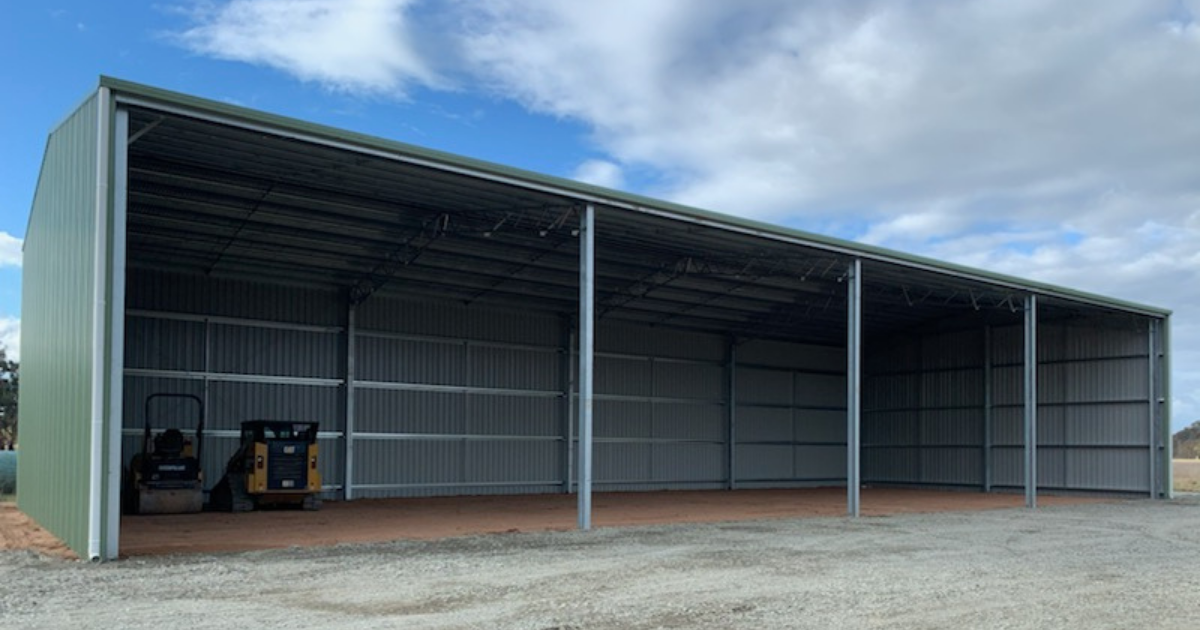Planning a shed for 2022
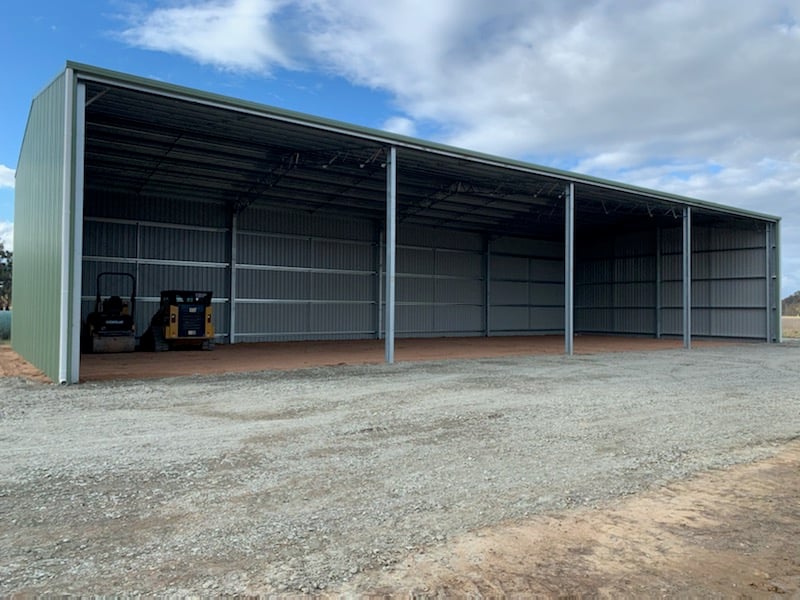
As the end of 2021 nears, now can be a great time to start planning ahead so that you’re well prepared for 2022. Key farming activities roll around quickly every year and with material shortages and the construction boom affecting all aspects of the building industry, why not try and get a head-start on planning what you need for next year?
While it may seem simple enough to order the machinery and equipment that you need, manufacturing something like a new shed can take some time. Careful planning needs to be done at the outset so that you get the shed that’s right for your needs whether that be for harvesting hay or grain, shearing sheep, or housing valuable farm machinery.
To help you plan ahead for 2022, we’ve put together a helpful guide that outlines some key farming activities that you may need a new farm shed for. We’ve also highlighted important timings so that you know when you would need to start the process of purchasing a new shed so that it’s ready in time.
From hay sheds to shearing sheds, learn more about when you may need to purchase a shed for 2022, along with some key considerations for different types of sheds below.
Hay and grain sheds for harvest season
One of the most important times of the year for many farmers across Australia is harvest season. Whether you grow hay or grain, it’s essential that you have adequate storage in place before harvest time so that none of your crops go to waste. If you’re anticipating a bumper crop then ensuring you have ample capacity for storage ahead of the harvest is imperative.
Hay shed planning
Hay sheds are relatively simple to install as they tend to follow the same layout, the only elements of a hay shed that a farmer may want to consider changing are how many walls they include, and whether enclosed bays for machinery are required. This decision will come down to location and typical weather conditions. Sometimes a roof-only hay shed is more than enough coverage for hay bales; in other instances, you may want to consider a more enclosed shed with something like three walls to prevent rain and prevailing winds from damaging hay. It’s also important that moisture doesn’t build up in your hay bales as this can cause spontaneous combustion.
For the average farmer, hay would normally be cut between June and September. Because of this, it's recommended that your shed is standing no later than mid-June. The process from initial planning stages through to manufacturing and then erection could take as long as 7 months, if not more due to the current construction boom. So with that in mind, we recommend you order your hay shed as soon as possible. Wouldn’t it be better to have your new shed ready and waiting for your hay rather than the other way around?
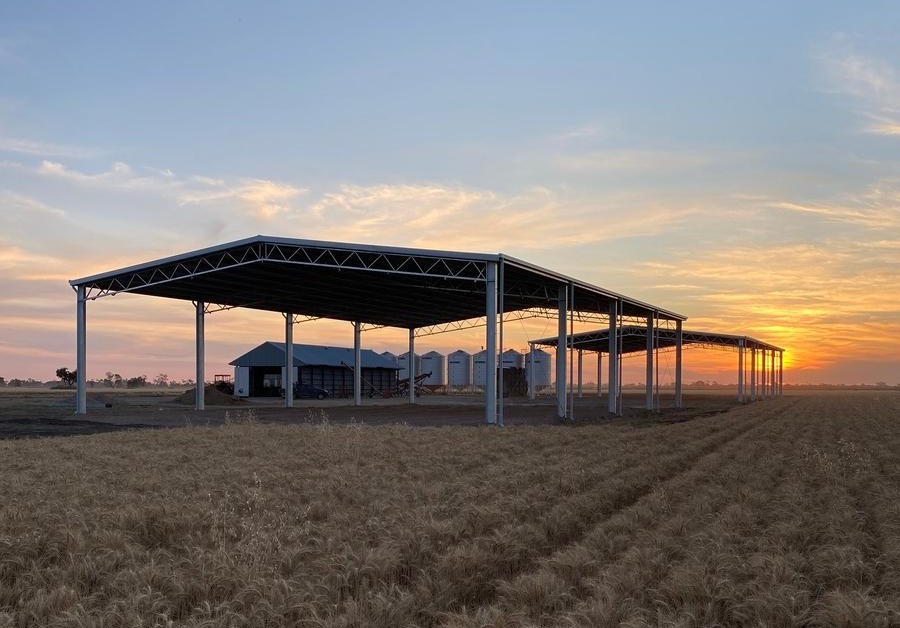
These ABC Sheds twin hay sheds are ready for the harvest season.
Grain shed planning
Unlike hay sheds that are relatively simplistic in their design, a lot more planning is involved with grain sheds. Most grain sheds will have concrete floors to act as a moisture barrier, protect the grain, and allow for easier cleanup. Because of this, a concrete supplier will be required, which will take time to organise as well as time at the build stage, where the concrete will need to be poured and allowed enough time to dry. Grain sheds can also take longer to design as they need to be engineered so that the panels can withstand the pressure of the grain which can be very heavy.
A lot of careful planning is needed for grain sheds so they shouldn’t be rushed. You must allow yourself plenty of time for the completion of this type of shed so we recommend ordering a grain shed no later than May so that it’s ready well before grain harvesting in October and November.
/abc_sheds_grain_shed_kurstjens_4-1.jpg?width=1000&name=abc_sheds_grain_shed_kurstjens_4-1.jpg)
This massive ABC Sheds grain shed provides plenty of storage for this grain harvester!
Shearing sheds for shearing season
Unless you’re lucky enough to have a flock of sheep that naturally shed their wool, like the Wiltshire, then you will need to shear your sheep at least once a year. While there is no standard time of year that all farmers shear their sheep, the basic requirements to get this done remain the same – some dry weather, a good shearing gang, and a quality shearing shed!
A lot of planning goes into designing a shearing shed that’s right for your specific needs. There is a lot to consider with the design of a shearing shed so that it works well for you during shearing time – things like a raised shearing board, how many sheep pens you will have and the placement of your chutes are all important factors to consider.
Giving yourself as much lead time as possible for this will make all the difference in ensuring that you have a shearing shed up and running, by the time shearing time comes. With an ABC Shed for example, once the shed is installed it could then take another couple of months to fit-out the shed so that it’s ready for use.
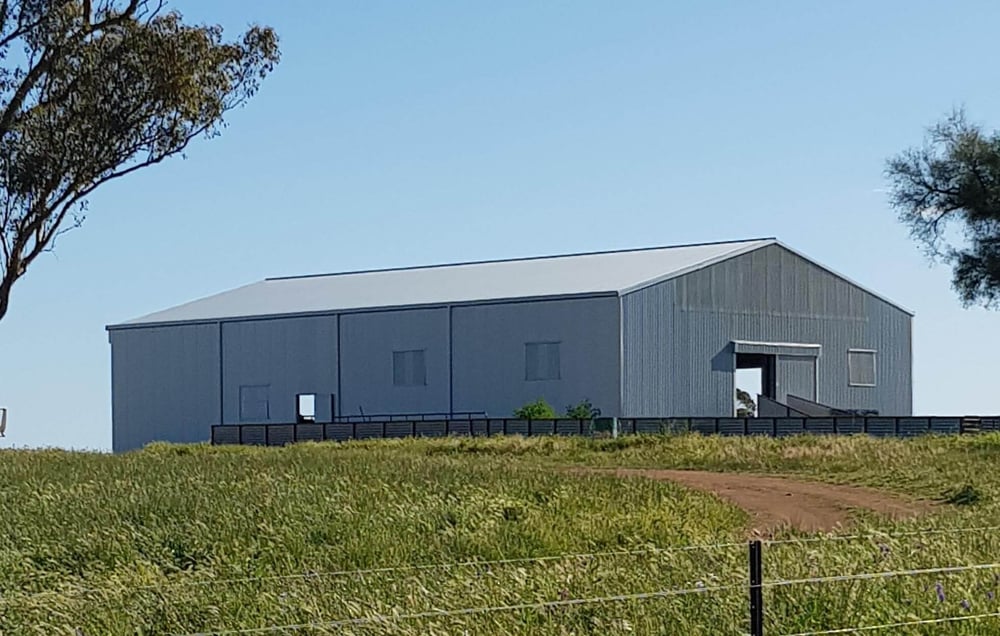
This shearing shed has it all! Multiple access ways, windows for ventilation and yards will make shearing time a breeze.
Farm machinery storage during winter
If you have a lot of machinery and equipment on your farm then having adequate storage for this to keep it protected during winter is essential. A quality farm machinery storage shed will ensure that your equipment is protected all-year-round.
Farm machinery is only getting bigger so the first thing to consider at the planning stage is how much room you will need to comfortably store everything. Are you left with enough extra space should you make more equipment or machinery purchases in the future? A little extra space or flexible bays will make all the difference and will ensure that you have not only enough storage now, but in the future too.
Many people also use a farm machinery shed for extra rainwater storage during the winter months. Australia is prone to long droughts during summer so being able to collect and store extra water to use at times when rainfall is extremely low is imperative. Simply purchase a stormwater tank and figure out your plumbing layout before the shed build starts.
So that there’s enough time to plan, manufacture and install your shed, you should get the process underway towards the end of the year so that the shed can be installed in autumn, ready for use in winter.
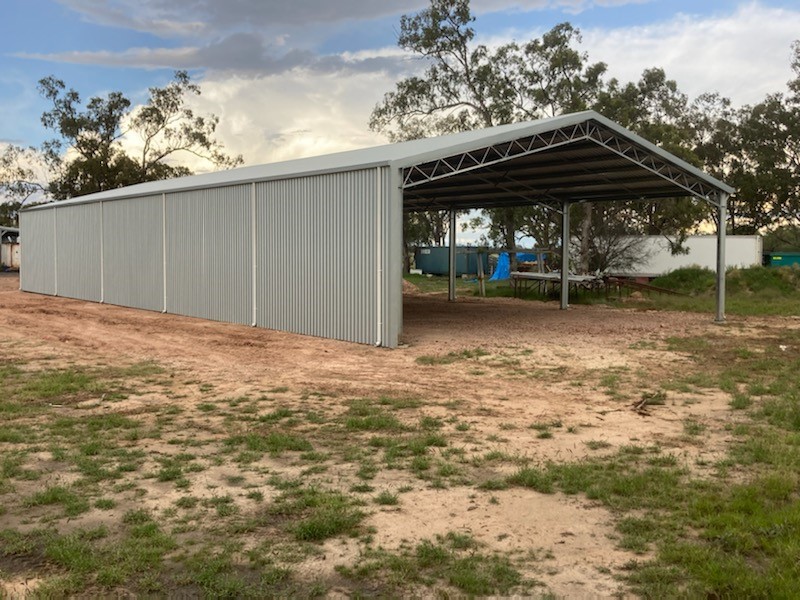
This farm machinery shed will provide lots of great equipment storage, all-year-round.
Start planning your shed now
There’s a lot that goes into building a quality farm shed that’s going to adequately serve your needs both now, and for years to come. So that you get a shed that’s just right, it’s best to consult with an experienced shed manufacturer who can guide you through the process.
Here at ABC Sheds, we’ve been manufacturing farm sheds for decades. Our team of experts will help you with the shed building process, at every step of the way. From providing guidance on different bay sizes, whether you go with a roof-only shed or enclosed walls, and extra security measures to keep machinery protected, our team can answer any question you may have about the shed building process.
If you’re planning now for 2022 and would like to get a new shed organised in plenty of time, you can start creating your shed with our free online shed builder. Design how your perfect shed will look and completely customise it to your needs – from the number of bays and walls to the colours! Try it out now by clicking below. 
-1.png?width=3641&height=660&name=abcshedstransparent2%20(1)-1.png)
